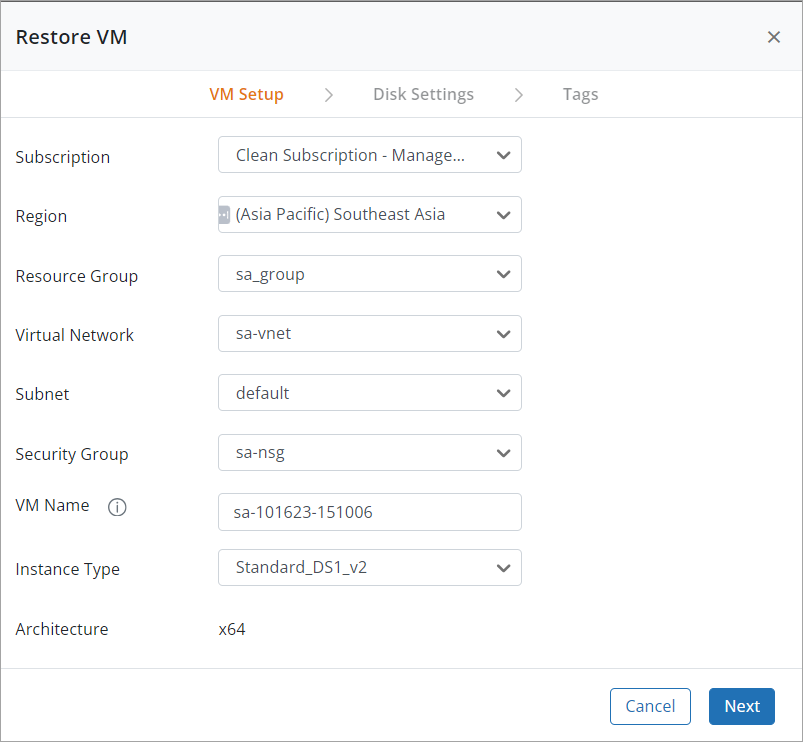Restore virtual machines
 Business
Business  Enterprise
Enterprise  Elite
Elite You can restore a virtual machine along with any associated managed disks to the same storage region or across regions.
Restore considerations
- You can configure the restore parameters such as region, Vnet, subnet, and so on. Tags defined during manual or auto configuration of the backups will be pre-populated by default.
- Only one resource can be restored at a single time.
- By default Druva will change the VM and the disk name so that the restore does not fail.
- A single job is initiated when restoring a VM and any associated disk IDs.
Restore tags
You may define additional tags when restoring a virtual machine or its associated disks. You can also remove an existing Azure tag from your management console. Removing tags added from your management console will only remove these from your Enterprise Workloads console and will not impact your Azure environment.
Note: Backup tags defined at the time of configuring the virtual machine for backup will be automatically inherited by the restored VM.
You can define additional tags but if the key is repeated twice then the user should be asked to confirm if they want to overwrite the existing Azure tag. If yes then the New additional tag should replace the existing one.
Restore full virtual machine
- Log into the management console.
- On the left navigation pane, click Virtual Machines.
- Navigate to the Protected VMs page, and select the virtual machine you wish to restore.
- Select a recovery point and click Restore.

- On the VM Setup page, specify the following details:
| Field | Description |
|---|---|
|
Subscription |
The subscription for which the backups need to be resto |
|
Region |
Select the restore Region: You may choose to restore the entire VM to the original region with pre-defined settings, or to an alternate region with custom restore settings. |
|
Virtual Network |
Select the Virtual network of the VM you wish to restore. The virtual network establishes connectivity between your Azure resources and helps monitor the security policies within the virtual network. |
|
Resource Group |
Select the Resource Group to which the backed up VM is a part of. Resource groups allow for more granular grouping and support specific functions within a subscription. |
|
Subnet |
Select the subnet associated with the VM to be restored. Subnets enable you to segment the virtual network into subnetworks, and secure resources within subnets using Network Security Groups. |
|
Security Group |
Select the Security Group based on the Subnet defined previously. |
|
VM Name |
Specify the restored VM Name. Note: The name specified here must be different from the original VM Name defined previously. |
|
Instance Type |
Select the Instance Type that the VM corresponds to. |
|
Architecture |
Select the processor architecture for the VM, for example, x86_64. |
6. On the Disk Settings page, specify the restored disk name. Click Next.
Note: The name specified here must be different from the original disk name.
7. The existing Tags on the VM are pre-populated. You may choose to define additional tags, as appropriate.
8. Click Finish to initiate the full virtual machine restore.
For more information on restore, see Azure VM restore workflow.

